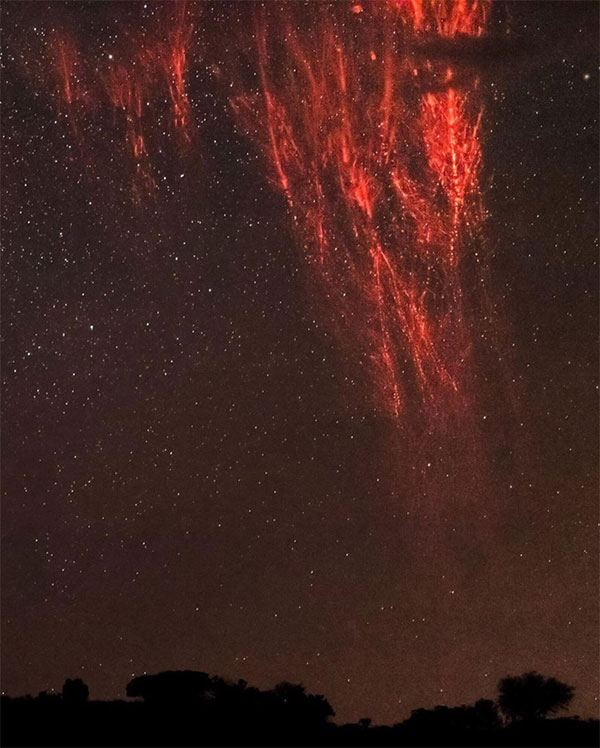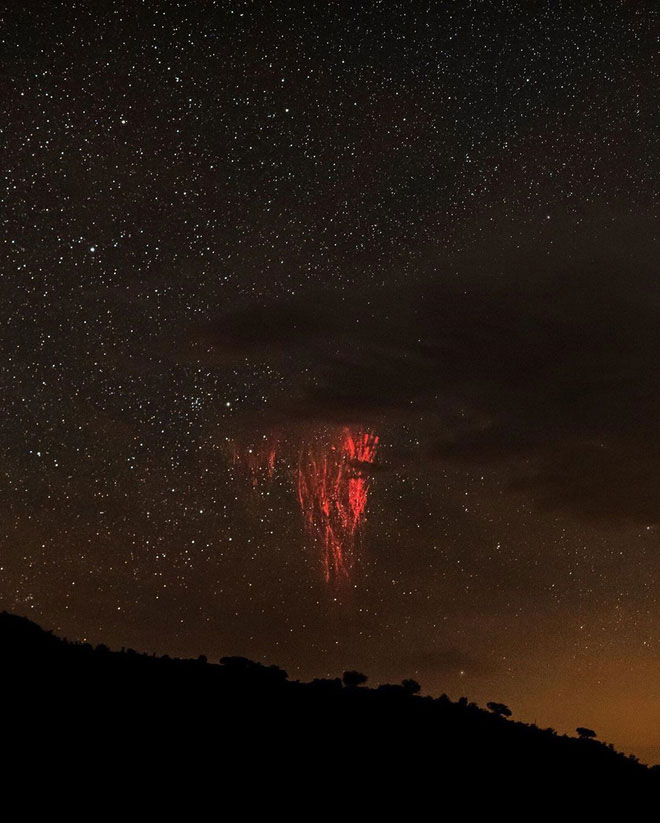National Geographic publishes a super rare phenomenon that you may not have seen before
Have you ever seen a red lightning? That is a real phenomenon.
Recently, National Geographic's official Instagram has just published photos of this phenomenon. And to be honest, they are beautiful.

Red clay.
The photo was taken by photographer Babak Tafreshi, taking a close-up of a natural phenomenon called " Red Sprite". Basically, prite is the process of large-scale discharge just above the thunderclouds - also known as the cumulonimbus cloud , at an altitude of 50 - 90km.
However, calling it the rooftop lightning is not entirely accurate.The essence of sprite is to release cold plasma rays , like the discharge process in fluorescent tubes rather than ordinary lightning.
Sprite rays are usually orange-red in color. However, they are almost colorless when viewed with the naked eye, only showing true colors under the lens of sensitive cameras. On the other hand, sprites are also extremely fast, making it difficult to capture their images.
So, the picture of Tafreshi was remarked to be extremely rare , because there are not many cases in history. The name "sprite" itself is also based on their characteristics,

Lightning red sprite at a wider angle.
The existence of the sprite was first determined by Johann Georg Estor in 1730, when he noticed that some optical phenomenon often occurred above thunder clouds. By 1925, CTR Wilson, a Nobel Prize-winning scientist, hypothesized that above the thunderclouds there was a charge of liberation, and in 1956 he confidently confirmed that he had observed sprite. .
But it was not until 1989, the evidence of the new sprite was recorded with a light-sensitive camera from the University of Minnesota. And since determining exactly which sprites exist, reports about it are constantly appearing and become thoroughly studied subjects of science.
Danger phenomenon difficult to explain to the airline industry
Sprite clay has been recorded in the Americas, Europe, Central Africa, Australia, Japan and some countries in Asia. Matthew Geoff McHarg from the US Air Force Institute has classified sprite into 3 categories based on their shape, including:
- Sprite jellyfish : extremely large sprite clay, up to 50km wide.
- Sprite in column (sprite or C-sprite column) : human sprite is still not fully understood.
- Sprite carrot (carrot sprite)

Sprite jellyfishSpSp.

Sprite is a carrot.
Historically, sprite has been blamed for some aerospace accidents, when devices fly higher than thunderclouds. For example, NASA's stratospheric hot air balloon was launched on June 6, 1989. When reaching a height of 37km, overcoming a storm in Texas, the device was severely out of control.
Several months after the accident, experts concluded that the balloon had been "struck by lightning" when passing through the thundercloud. By 1993, the cause was changed back to sprite, because the term was just born.
- A clear picture of red heterosexual lightning was taken from the International Space Station
- This weekend, we will see super moon
- The fantasy world through the best photos honored by National Geographic
- Top 10 best photos on National Geographic 2011
- Award-winning photos of National Geographic Photo Contest 2015
- 25 pictures of 'forgotten' impressive lives by National Geographic
- National Geographic top 20 Photo of The Day 2015
- Beauty genre The National Geographic Life moment
- The series makes you wonder at the breathtaking beauty of nature
- Nice photos of National Geographic Photo Contest 2014
- Best photo of National Geographic in 2010
- Hurricane Irma drained seawater, a rare phenomenon of surreality
- Strange things in the sun did not set for 2 months
 'Fine laughs' - Scary and painful torture in ancient times
'Fine laughs' - Scary and painful torture in ancient times The sequence of numbers 142857 of the Egyptian pyramids is known as the strangest number in the world - Why?
The sequence of numbers 142857 of the Egyptian pyramids is known as the strangest number in the world - Why? History of the iron
History of the iron What is alum?
What is alum?